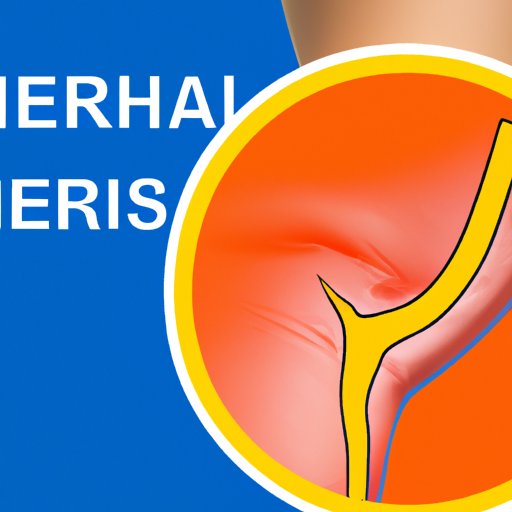Introduction
A hernia is a common medical condition that affects people of all ages. It occurs when an organ or tissue pushes through a weak spot in the surrounding muscle or tissue. Although hernias are generally not life-threatening, they can cause severe discomfort and potentially lead to complications if left untreated. Recognizing the symptoms of a hernia is crucial to getting the necessary treatment and preventing further problems.
Types and Symptoms of Hernias
There are several types of hernias, each with its unique characteristics. The most common types of hernias include:
1. Inguinal Hernias
Inguinal hernias are the most common type of hernia and often affect men. They occur when the tissue or intestine pushes through a weak spot in the groin muscle. Symptoms of an inguinal hernia may include:
- A bulge or swelling in the groin area
- Pain or discomfort in the groin, especially when bending over or lifting heavy objects
- A feeling of heaviness or pressure in the groin

2. Umbilical Hernias
Umbilical hernias are common in infants but can also affect adults. They occur when the intestine or other tissue pushes through the abdominal wall around the belly button. Symptoms may include:
- A soft bulge or swelling near the belly button
- Pain or discomfort, especially when coughing or straining
- A feeling of fullness or pressure in the stomach

3. Hiatal Hernias
Hiatal hernias occur when part of the stomach pushes up into the chest through the opening in the diaphragm. Symptoms may include:
- Heartburn or acid reflux
- Chest pain or discomfort
- Difficulty swallowing
- Shortness of breath

Causes of Hernias
While hernias can occur at any age, certain factors can increase the risk of developing one. These factors include:
- Age
- Pregnancy
- Family history of hernias
- Chronic coughing or sneezing
- Heavy lifting or straining
- Obesity
- Persistent constipation
Lifestyle choices, such as smoking and poor nutrition, can also increase the risk of developing a hernia.
Self-Check for a Hernia
If you suspect you might have a hernia, there are some steps you can take to self-check for one. Firstly, it’s important to note that not all hernias are visible and noticeable. You may have a hernia that is only detectable through a medical exam. However, some hernias can be detected by examining your own body. Here are the steps to take for a self-check:
- Lie down and relax your abdominal muscles.
- Examine your groin area for any bulges or swelling while standing. Try to feel for any lumps or bumps.
- If you suspect you may have an umbilical hernia, gently press on your belly button area and see if you feel any pain or discomfort.
- If you experience any pain, discomfort or a bulge, contact your healthcare professional.
Distinguishing Hernia from Other Conditions
Some conditions may have similar symptoms to hernias. It’s essential to distinguish hernias from other conditions to ensure appropriate treatment. Common conditions with similar symptoms include:
- Abscesses
- Varicoceles
- Enlarged lymph nodes
- Acute appendicitis
- Prostate enlargement
- Diverticulitis
If you experience any of the symptoms listed above or suspect you might have a hernia, we recommend contacting your healthcare professional for a medical diagnosis.
When to Seek Medical Attention
If you suspect you have a hernia, it’s vital to see a healthcare professional to determine the appropriate course of treatment. In some cases, a hernia may not require treatment. However, in other cases, medical intervention may be necessary. Your healthcare professional may recommend surgical repair if your hernia is causing severe discomfort, if it is growing larger, or if it is at risk of becoming strangulated.
Strangulated hernias, where the organ protruding through the muscle wall becomes trapped and cuts off blood supply, can be life-threatening. Symptoms of a strangulated hernia can include severe pain, nausea, vomiting, and the presence of a hard, tender lump in the groin or abdomen. If you experience any of these symptoms, it’s essential to seek immediate medical attention.
Conclusion
In conclusion, recognizing the symptoms of a hernia is essential to getting the necessary treatment and preventing further problems. If you suspect you might have a hernia, it’s crucial to see a healthcare professional to determine the appropriate course of action. By following self-check measures and regularly monitoring your body for changes or symptoms, you can stay on top of your health and seek treatment promptly when necessary.
If you’re already experiencing symptoms of a hernia, don’t worry! Proper diagnosis and treatment can help to alleviate symptoms, speed up recovery, and prevent further complications. Schedule an appointment with your healthcare professional as soon as possible if you’re experiencing any of the symptoms described above.
